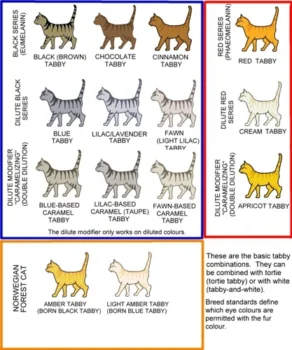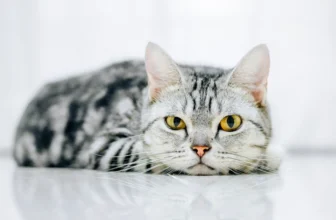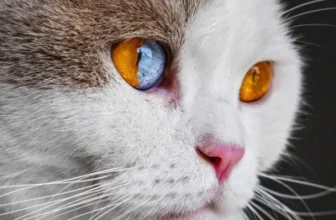Have you ever seen a California Spangled Cat with a tabby coat pattern and wondered about its genetics? Or have you recently adopted a tabby California Spangled Cat and are curious about how to care for it? Understanding the classic tabby coat pattern in California Spangled Cats is essential to providing proper care and appreciation for these beautiful felines. In this article, we will delve into the genetics of tabby coat patterns, the characteristics and history of the classic tabby pattern in California Spangled Cats, other tabby patterns that exist in this breed, and tips for caring for your feline friend. So, let’s dive right in and uncover the mysteries behind the classic tabby coat pattern in California Spangled Cats!
The Genetics of Tabby Coat Patterns
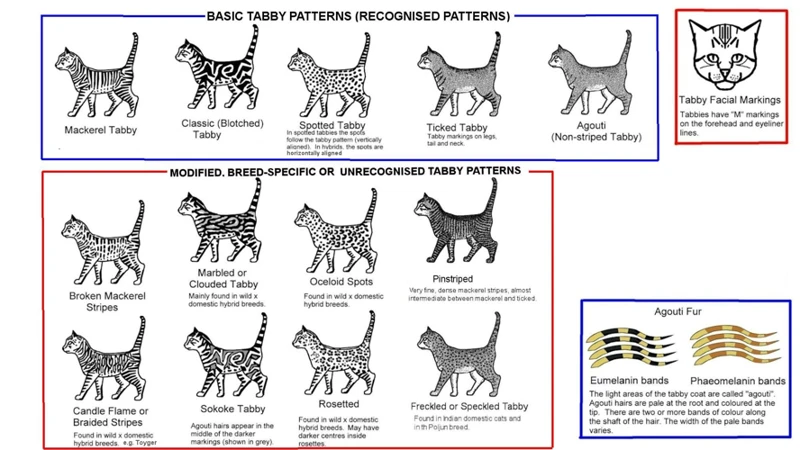
When you look at a feline with a tabby coat pattern, you will notice that it has dark lines, spots, or swirls against a lighter background. From afar, this pattern resembles the letter “M” on the forehead of the cat. The tabby coat pattern is one of the most common patterns found in cats. It is not a breed of its own but can be found in various breeds and mixed breeds of cats including the California Spangled Cat. In this section, we will delve into the genetics of tabby coat patterns to understand how certain coat patterns are formed. Understanding the genetics behind tabby coat patterns can help us understand why some California Spangled Cats have classic tabby coats while others have unique coat patterns like the tuxedo pattern. Let’s explore the tabby genes and patterns before diving into the California Spangled Cats’ tabby patterns.
The Tabby Gene
The tabby gene is responsible for the distinctive coat pattern found in California spangled cats. This gene is dominant, which means that only one copy of the gene is necessary for the tabby coat pattern to appear. When a cat inherits two copies of the tabby gene, this can result in a more intense and defined pattern.
Here are some key features of the tabby gene:
- The tabby gene is found on the X chromosome, which means that it is sex-linked. This means that male cats only inherit one copy of the gene, while females inherit two.
- The tabby gene can express itself differently depending on the specific pattern it creates.
- It is possible for a cat to carry the tabby gene without expressing it in their coat pattern.
It’s important to note that the tabby gene is not specific to California spangled cats. Many different cat breeds can have a tabby coat pattern, and the gene can express in a variety of ways. In fact, there are several different types of tabby patterns, each with its own unique characteristics. For more information on the different tabby patterns, see our article on the rare mackerel tabby coat pattern in California spangled cats.
The Mackerel Tabby Pattern
The Mackerel Tabby pattern is one of the three main tabby patterns that are characterized by a striped coat. This pattern got its name from the resemblance of the stripes to fish bones, particularly mackerel. The Mackerel pattern is the original or wild type tabby pattern and is found in many feline breeds, including California Spangled Cats.
Distinctive Features of the Mackerel Tabby Pattern
- The coat has vertical stripes that run parallel down the side of the body that may be broken or unbroken.
- The forehead typically has an “M” shaped marking, which is a feature common to all tabby patterns.
- The cat’s tail has a series of dark rings or bands.
- The pattern may extend to the legs and face of the cat.
One unique feature of the Mackerel Tabby pattern is the interaction of the stripes with the underlying agouti or ticking gene. This gene produces a striped effect on individual hair shafts, and when it interacts with the tabby gene, it produces the distinctive stripes found in tabby cats. The Mackerel Tabby pattern also has distinct coloration, and the stripes have a different shade from the base color of the coat.
It’s essential to note that the Mackerel Tabby pattern is not the same as the Classic Tabby pattern. The Classic Tabby pattern has a distinctive swirl or bullseye-shaped pattern on each side of the body, while the Mackerel Tabby pattern has vertical stripes.
Understanding the different tabby patterns can help you identify your cat’s breed. California Spangled Cats have several other coat patterns, including the Tuxedo coat, the Spotted coat, and the Combination coat. If you want to learn more about these patterns, you can check out our articles on /unique-california-spangled-cats-tuxedo-coat/ and /california-spangled-cats-spotted-coat-pattern/.
In the next section, we will explore the Classic Tabby pattern, its distinct characteristics, and how it appears in California Spangled Cats.
The Classic Tabby Pattern
The Classic Tabby pattern is one of the most well-known and beloved coat patterns in cats, including California Spangled cats. This pattern is characterized by bold, swirling patterns of dark lines known as “marbling,” which make the cat appear almost striped. Here are some of the key features of the Classic Tabby pattern:
| Feature | Description |
| Bold marbling | The hallmark of the Classic Tabby pattern is its bold, dark marbling, which stands out sharply against the lighter background of the cat’s fur. |
| Whorls and spirals | The marbling of the Classic Tabby pattern often forms circular or spiral shapes, giving the cat’s fur a distinctive, eye-catching appearance. |
| M-shaped forehead marking | Many Classic Tabby cats have a distinctive marking on their forehead that resembles the letter “M,” although not all cats with this pattern have this feature. |
| Dark-lined tail | The Classic Tabby pattern often has a boldly marked tail, with dark lines running down the length of the tail and sometimes culminating in a darker tip. |
The Classic Tabby pattern is thought to have originated in the Mediterranean region, but has now been documented in cats all over the world. Because of its popularity, breeders have developed many different breeds of cats that exhibit this pattern, including the California Spangled cat.
Did you know? The Classic Tabby pattern can also be combined with other coat patterns to create unique combinations, such as the Combination Tabby pattern. Learn more about this fascinating topic in our article on combination coat patterns in California Spangled cats.
The Classic Tabby Pattern in California Spangled Cats
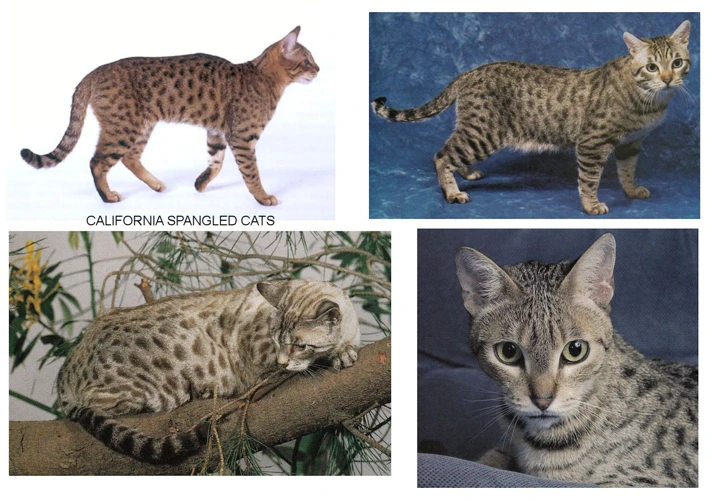
The classic tabby pattern is one of the most popular coat patterns among California Spangled cats. This coat pattern features a distinct “bull’s eye” or “swirl” on their sides, along with bold stripes on their legs and tail. It is a unique and beautiful coat pattern that adds to the charm of these cats. In this section, we will dive into the characteristics of the classic tabby pattern and its prevalence in California Spangled cats.
The Characteristics of the Classic Tabby Pattern
The classic tabby pattern in California Spangled cats is known for its distinct markings that resemble the letter “M” on the forehead. This pattern is created by a combination of swirls, stripes, and spots on the coat, creating a unique and beautiful look. The following table breaks down the typical characteristics of cats with the classic tabby pattern:
| Characteristic | Description |
|---|---|
| M-shaped forehead | Dark markings in the shape of an M on the forehead. |
| Swirls and stripes | Striped patterns on the legs and tail, with swirls on the body. |
| Bold contrast | Dark, bold lines and markings on a lighter coat color. |
| Symmetry | Pattern is evenly distributed on both sides of the cat’s body. |
| Eye and nose liner | Dark markings around the eyes and nose. |
Cats with the classic tabby pattern have a striking and unique appearance that is easily recognizable. This pattern can come in a variety of colors, including black, gray, orange, and brown, making each cat with this coat pattern truly one-of-a-kind.
The History of California Spangled Cats
The California Spangled cat breed is relatively new, with a fascinating history. Let’s look at the circumstances that led to the creation of this unique cat breed:
- Environmental Concerns: In the 1970s, American conservationist, Dr. Paul Casey, became concerned about the decreasing numbers of wild felines as a result of deforestation and environmental degradation. He worried that future generations would never get to experience the joy of seeing these animals in the wild. This sparked an idea in Casey’s mind to create a domestic cat breed that would remind its owners of the beauty of wild cats but without the destructive tendencies.
- Breeding Program: To create the California Spangled cat breed, Casey set up a special breeding program in the early 1980s using a combination of domestic cat breeds, including Abyssinians, British Shorthairs, American Shorthairs, and even street cats. The primary goal of the breeding program was to produce cats with unique coats that resemble wild cats from different parts of the world.
- The Final Product: After years of careful breeding, the California Spangled cat breed was finally created in 1986. These cats have a distinctive spotted coat that can come in hues of black, brown, silver, and other colors. They also have a muscular build that further emphasizes their wild cat appearance. The breed’s popularity soared, and soon people all over the world began to take notice of this stunning breed.
The California Spangled cat breed is a testament to human ingenuity and the desire to protect the planet’s natural beauty. Today, they continue to captivate cat lovers with their unique personalities and stunning coats.
Other Tabby Patterns in California Spangled Cats
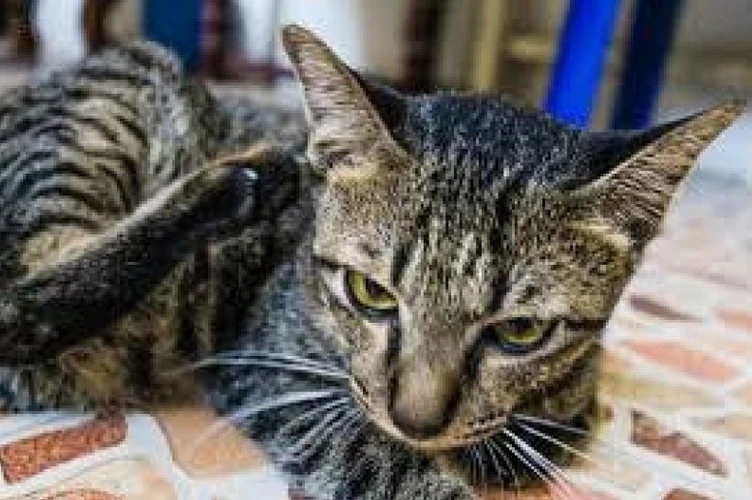
As we’ve discussed, the classic tabby pattern isn’t the only tabby coat pattern found in California Spangled cats. In fact, there are several other fascinating tabby patterns that these majestic felines can showcase. Let’s take a closer look at these unique tabby coat patterns and discover their defining characteristics, historical backgrounds, and charming appearances. Who knows, you might even find a new favorite among them!
The Spotted Tabby Pattern
The Spotted Tabby Pattern is a unique variation of the tabby coat pattern in California Spangled Cats. In this pattern, the coat features circular or oval spots that are distinctive and easily noticeable. The spots are typically in various shades of the same color, creating an eye-catching effect. The background of the coat is usually light in color, which makes the spots stand out even more.
This pattern is caused by the same gene that produces the Mackerel and Classic tabby patterns but with a different expression. The spots are formed due to the uneven distribution of pigments in the hair shaft and the overall distribution of pigment cells in the skin.
Characteristics of the Spotted Tabby Pattern:
| Physical Characteristics | Behavioral Characteristics |
| Spotted coat pattern in various shades of the same color | Active and playful personality |
| Light-colored background | Intelligent and curious nature |
| Distinctive and easily noticeable spots | Affectionate with their owners |
| Medium-sized and muscular body | Friendly towards other pets and children |
Caring for a California Spangled Cat with the Spotted Tabby Pattern is similar to caring for any cat with a tabby coat. Regular grooming practices, such as brushing, bathing, and nail trimming, should be incorporated into their routine. Providing a balanced diet, fresh water, and regular veterinary check-ups are also essential for their overall health and well-being.
The Spotted Tabby Pattern is a unique and distinctive variation of the tabby coat pattern in California Spangled Cats. Their unusual spotted coat and friendly, outgoing personality make them a popular choice for those looking for a unique and loving companion. By understanding the characteristics and needs of these cats, you can provide them with the right care and attention they need to thrive.
The Ticked Tabby Pattern
The ticked tabby pattern is a unique and distinct coat pattern found in California Spangled Cats. This pattern is characterized by agouti hairs that are evenly banded with light and dark colors, giving the coat a salt-and-pepper appearance. Unlike other tabby patterns, the ticked pattern lacks any distinctive markings on the body, making it a subtle and understated option compared to the more dramatic mackerel and classic patterns.
Origins of the Ticked Tabby Pattern
The ticked tabby pattern is thought to have originated in the wild African wildcat, where it provided an excellent camouflage for hunting. This adaptive trait was later inherited by domestic cats and is now present in many different breeds, including the California Spangled Cat. The ticked pattern is produced by a gene called the agouti gene, which controls the distribution of pigments in the hair shafts.
Physical Characteristics of the Ticked Tabby Pattern
Visually, the ticked tabby pattern can be identified by the agouti hairs, which are deeply rooted and have multiple bands of color. The coat will have a salt-and-pepper resemblance, which is more apparent in younger cats. The color of the hairs ranges from light to dark, and the overall effect is one of a muted, understated look. What sets the ticked pattern apart from other tabby patterns is the lack of any distinctive markings on the body. However, some cats may have faint “ghost” markings on the head or legs, but these are not considered to be true tabby markings since the overall coat is ticked.
Caring for Ticked Tabby Cats
Caring for ticked tabby cats is similar to caring for other tabby cats. They require regular grooming to keep their coats healthy and shiny. Brushing their coats regularly to remove loose fur is essential, as is trimming their nails and cleaning their ears. A healthy diet and regular veterinary checkups are also necessary to maintain good health.
The ticked tabby pattern is a unique, understated, and highly desirable coat pattern found in California Spangled Cats. While it lacks some of the distinctive markings of other tabby patterns, its salt-and-pepper appearance and subtle beauty make it a popular choice for cat lovers.
The Patched Tabby Pattern
The patched tabby pattern, also known as tortoiseshell tabby, is a unique and distinctive coat pattern found in some California Spangled Cats. This pattern is seen less frequently than other tabby patterns, which makes it quite intriguing.
The patched tabby pattern is characterized by patches of two distinct colors – black and orange – on a tabby coat. These patches may be large or small, and are usually irregular in shape. The blend of colors in this pattern is usually not even, and can create an attractive mosaic effect on the cat’s fur.
Like other tabby patterns, the patched tabby pattern is also the result of the interaction between the tabby gene and other genes responsible for coat color. In the case of the patched tabby pattern, the color patches are formed due to the presence of a gene called the “orange gene”.
It’s essential to note that the patched tabby pattern only occurs in female cats. This is because the gene responsible for the orange color is X-linked, which means it is carried by the X chromosome. As female cats have two X chromosomes, they can express both black and orange colors, resulting in the formation of patchwork.
If you’re fortunate enough to have a California Spangled Cat with a patched tabby pattern, special care is needed to ensure that their coat remains healthy and vibrant. Brushing regularly, providing high-quality food, and keeping them up to date on their vaccinations are some of the ways to maintain their well-being.
While the patched tabby pattern is an uncommon coat pattern in California Spangled Cats, it can be strikingly distinctive when it does occur. It’s an interesting blend of colors that creates an attractive mosaic effect that sets it apart from other tabby patterns. Understanding the genetic makeup and special care needed for this pattern is crucial in keeping your furry friend healthy and happy.
How to Care for California Spangled Cats with Tabby Coats
California Spangled Cats with Tabby Coats are relatively easy to care for, but they still require some attention and care. Here are some tips for taking care of these beautiful cats:
Grooming: It is important to groom your California Spangled Cat with a tabby coat regularly to keep their fur in good condition. Tabby cats usually have thick fur that can mat if not brushed regularly. Brush your cat at least twice a week to remove any loose fur and prevent matting.
Bathing: If your California Spangled Cat with a tabby coat gets dirty, give them a bath. Use a mild cat shampoo and warm water to clean their coat and rinse thoroughly. Be sure to avoid getting water in their ears, and towel dry them gently afterward.
Nutrition: Feed your California Spangled Cat with a tabby coat a healthy and balanced diet that includes high-quality protein. Look for cat food that is rich in animal-based protein and low in carbohydrates. Obesity is a risk for any cat breed, so be sure to monitor their weight and adjust their diet accordingly.
Exercise: Like all cats, California Spangled Cats with tabby coats need plenty of exercise and playtime. Provide them with toys and scratching posts to keep them active and engaged. Encourage them to play and exercise regularly to help maintain their physical and mental health.
Veterinary care: Regular veterinary check-ups are important to keep your California Spangled Cat with a tabby coat healthy and prevent any potential health problems. Be sure to schedule annual exams, vaccinations, and parasite control treatments as needed.
By following these tips, you can help ensure that your California Spangled Cat with a tabby coat remains healthy and happy for years to come.
Conclusion
After exploring the genetics and characteristics of the classic tabby coat pattern in California Spangled cats, as well as other tabby patterns, it is clear that these cats are not only beautiful but also unique and fascinating. Whether you are a cat lover or simply interested in animal genetics, learning about the tabby patterns is an intriguing subject.
If you are considering adopting a California Spangled cat with a tabby coat, it is important to understand the specific needs of this breed. These cats require plenty of exercise, mental stimulation, and a well-balanced diet to maintain their health and happiness. Additionally, regular grooming and veterinary check-ups are crucial to ensuring their well-being.
Overall, California spangled cats with tabby coats are a wonderful addition to any household. With their striking appearance and playful personalities, they are sure to bring joy to their owners every day. Whether you are a first-time cat owner or a seasoned pro, a tabby cat is an excellent choice for those looking for a companion that is both unique and affectionate. So, consider adopting a tabby cat today and experience the joys of owning a one-of-a-kind feline friend!
Frequently Asked Questions
What is a tabby coat pattern?
A tabby coat pattern is characterized by stripes, spots, or swirling patterns in a cat’s fur coat.
What causes the tabby coat pattern?
The tabby coat pattern is caused by a specific gene that is responsible for the pattern of stripes and spots in a cat’s fur.
What are the different types of tabby coat patterns?
The different types of tabby coat patterns include mackerel, classic, spotted, ticked, and patched.
What is the classic tabby pattern?
The classic tabby pattern features bold, swirling patterns on the cat’s coat, with distinct stripes on the legs and tail.
What is a California Spangled cat?
A California Spangled cat is a breed of cat known for its spotted coat and unique appearance. They were first developed in California in the 1970s.
What are the characteristics of a classic tabby California Spangled cat?
A classic tabby California Spangled cat has bold, swirling patterns in its coat, with distinctive stripes on its legs and tail. They are known for their athleticism and intelligence.
What is the history of California Spangled cats?
California Spangled cats were first developed in California in the 1970s in order to create a domestic cat with the appearance of a wild cat. They were a popular breed in the 1980s, but have since become quite rare.
What is a spotted tabby pattern?
The spotted tabby pattern features spots all over the cat’s coat instead of stripes or swirls.
What is a ticked tabby pattern?
The ticked tabby pattern features a coat that appears solid from a distance, but up close has individual hairs that are ticked with different colors.
How should I care for my California Spangled cat?
California Spangled cats require regular grooming to keep their fur healthy and shiny. They also require regular exercise and mental stimulation to keep them happy and healthy.

